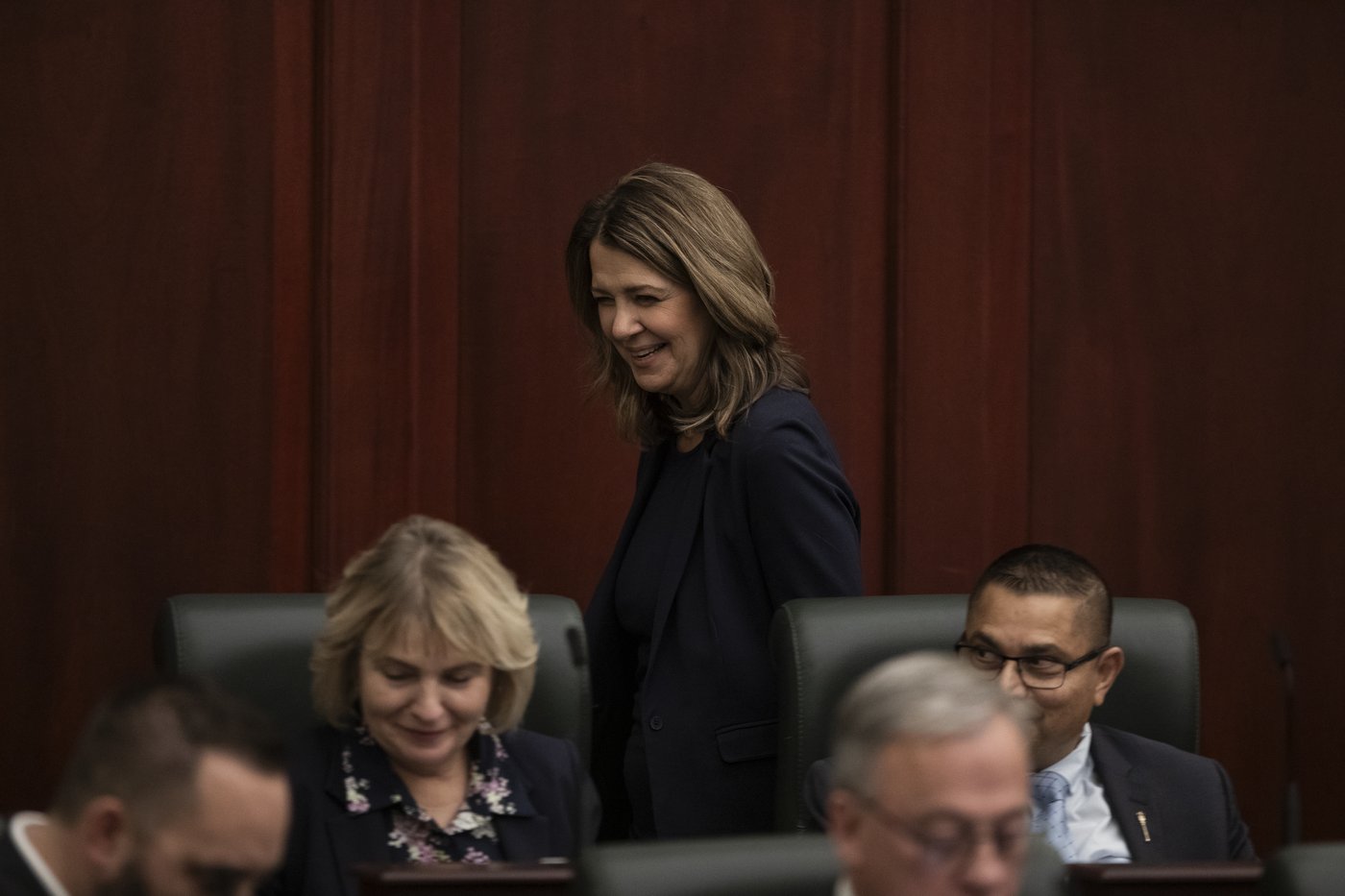Elevate your local knowledge
Sign up for the iNFOnews newsletter today!
Sign up for the iNFOnews newsletter today!
Selecting your primary region ensures you get the stories that matter to you first.

EDMONTON — Alberta’s premier said Saturday she hopes the legislation her government tables in two days to force striking teachers back to work isn’t followed by broader labour action.
Danielle Smith’s comments on her call-in radio show came on the heels of a threat of “unprecedented” mobilization by the Alberta Federation of Labour if the government doesn’t rule out the use of the notwithstanding clause in its dealings with teachers.
“Invoking the clause… would escalate the situation from a confrontation between your government and the teachers to a confrontation between you and the entire Canadian labour movement,” said the federation, which represents 350,000 Alberta workers across various industries, in a statement Friday evening local time.
“If you take this unprecedented approach, we will have no choice but to mobilize an unprecedented response.”
Smith said this week that if a deal is not reached over the weekend, her government will order teachers back to work through legislation on Monday, effectively ending the strike that began Oct. 6.
Her government has not said whether it would use the notwithstanding clause, a Charter provision that allows governments to override certain rights for up to five years.
But she was asked about it on her call-in radio show on Saturday morning.
“This is a texter who said, ‘What is your response to a provincewide strike being threatened if you invoke the notwithstanding clause,” the host of the show asked Smith.
She responded by repeating that she is hoping the government and teachers reach an agreement before the government tables the bill, not ruling out the use of the clause.
She said government tried to reach an agreement last week when it invited teachers to enhanced mediation, which would have seen a mediator put non-binding terms to both parties for review. She said the teachers declined the invitation.
“We’re at a point now where if they don’t voluntarily agree with us to return to work and do that kind of mediation work, we’re just going to have to have them back,” Smith said.
“I hope that most people understand that. I hope it doesn’t end up going to a broader labour action.”
She said her government is balancing the rights of taxpayers, students and teachers.
The Alberta Teachers’ Association president Jason Schilling has called the enhance mediation proposal insulting as it vetoed discussion of caps on classroom sizes. He didn’t rule out the possibility of ending the strike if the province changes the terms of mediation.
Smith was asked why the sticking point of classroom size was off the negotiation table on Saturday.
She responded that not every issue can be discussed at the bargaining table.
She said that’s why her government has proposed to launch a commission once the strike is over to study the state of Alberta’s education system and how to resolve the classroom complexity and size issues.
“That’s the kind of granular work that we need to do, is classroom by classroom, go through and work with the school boards to engineer a solution that’s going to work for the particular teacher, that particular circumstance,” she said.
She said having classroom size provisions in the contract is limiting as every school is different. She said the government has offered a 12 per cent salary increase over four years and a promise to hire 3,000 more teachers.
A caller on the radio criticized Smith for promising to address the issues only after the contract has been signed.
“Suggesting and promising to address this once teachers have signed their contract kind of goes against the purpose of contractual agreements,” the caller said.
“The point is to have measures in place in writing that hold both parties accountable. When I sign my mortgage contract, I don’t sign it and then hope to debate the conditions later on.”
On Friday, Schilling said that no formal negotiation meetings were set for the weekend, but he also doesn’t see the point in further talks if the province isn’t willing to discuss the union’s key priorities.
The ATA has said it’s weighing its options “with input from lawyers” about the back-to-work order.
This report by The Canadian Press was first published Oct. 25, 2025.
Want to share your thoughts, add context, or connect with others in your community?
You must be logged in to post a comment.